Last updated on September 5th, 2024 at 12:40 am
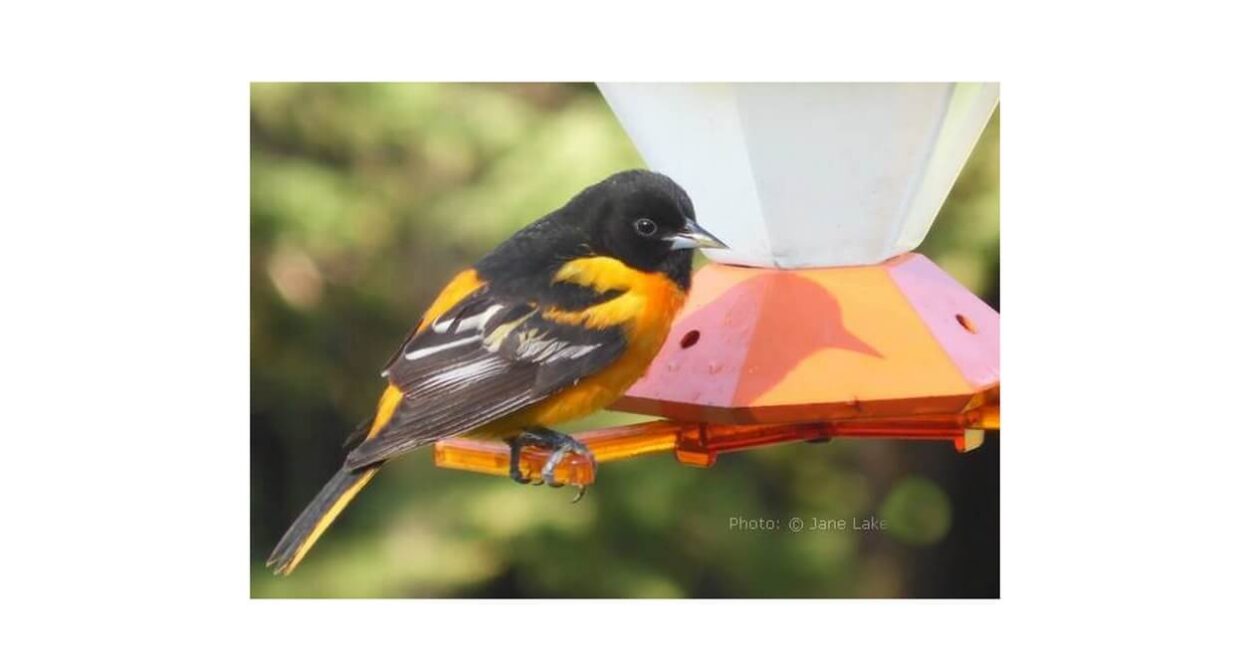
How to Attract Orioles to Your Garden
By Jane Lake
If you are lucky enough to have willows, poplars, elms or cherry trees in your yard, you already have a favorable environment to attract orioles. If you don’t, however, there are still several simple ways to attract orioles to your garden.
What Orioles Like to Eat
Orioles feed on insects and caterpillars, but these colorful little birds also like nuts, suet, fruit such as oranges, cherries, apples, pears or bananas and, of course, sweet oriole nectar.
There’s no need to buy expensive oriole nectar. Make your own from this simple sugar and water recipe:
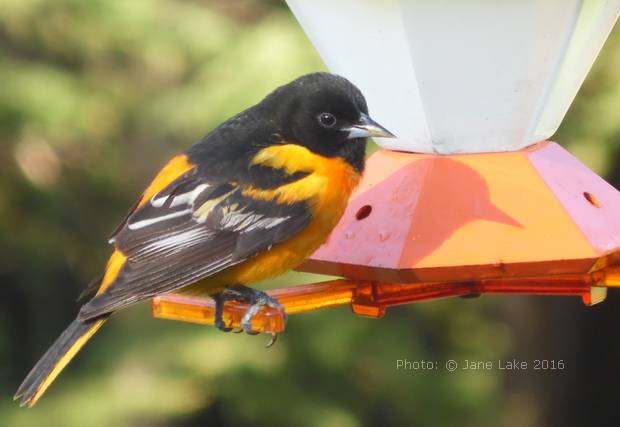
Homemade Oriole Food Nectar
You Will Need:
1 part sugar/6 parts water
Instructions
Boil the water first, then measure and add sugar, at the rate of 1/3 cup of sugar to 2 cups of water.
Let cool and store excess in refrigerator until ready to use.
Although commerical oriole food is usually colored orange, do not add food coloring, honey (which ferments) or artificial sweetener to your homemade recipe.l
You should clean your feeder every few days, with hot water and a mild (10%) bleach solution to inhibit mold. Rinse the feeder thoroughly before refilling with your homemade oriole food.
Homemade Oriole Feeder for Oranges and Grape Jelly
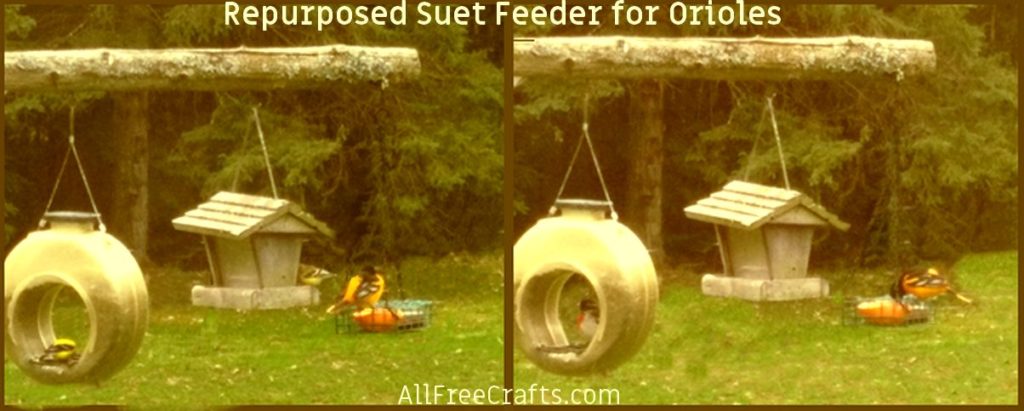
As well as offering oriole nectar from the easy recipe shown above, consider offering sliced oranges and grape jelly on a feeding platform.
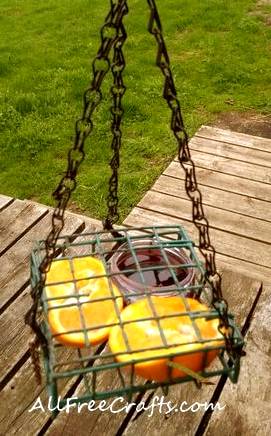
Wire suet feeders are usually used to provide suet blocks for woodpeckers, nuthatches or other backyard birds. They are readily available in the dollar store or pet supply store, but you can also order an simple wire suet feeder from Amazon.
You will need a chain hanger or string to suspend the feeder from a hook or tree branch.
Simply open the side of the suet feeder (which will now be used as the top) and place half an orange inside the wire cage. Two oranges will fit if you squeeze them close together.
Beside the oranges, place a shallow bowl or a small jar filled with grape jelly. Snap the opening closed and keep the feeder on its side.
Attach a chain holder, as shown, or fashion a hanger from string.
The chain holder used in this project was previously used as a plant holder. You could try reusing a three-pronged plastic flower basket holder, that kind that holds baskets of summer flowers, providing the snap closures fit securely on the wire cage.
Other Ways to Offer Oranges to Orioles
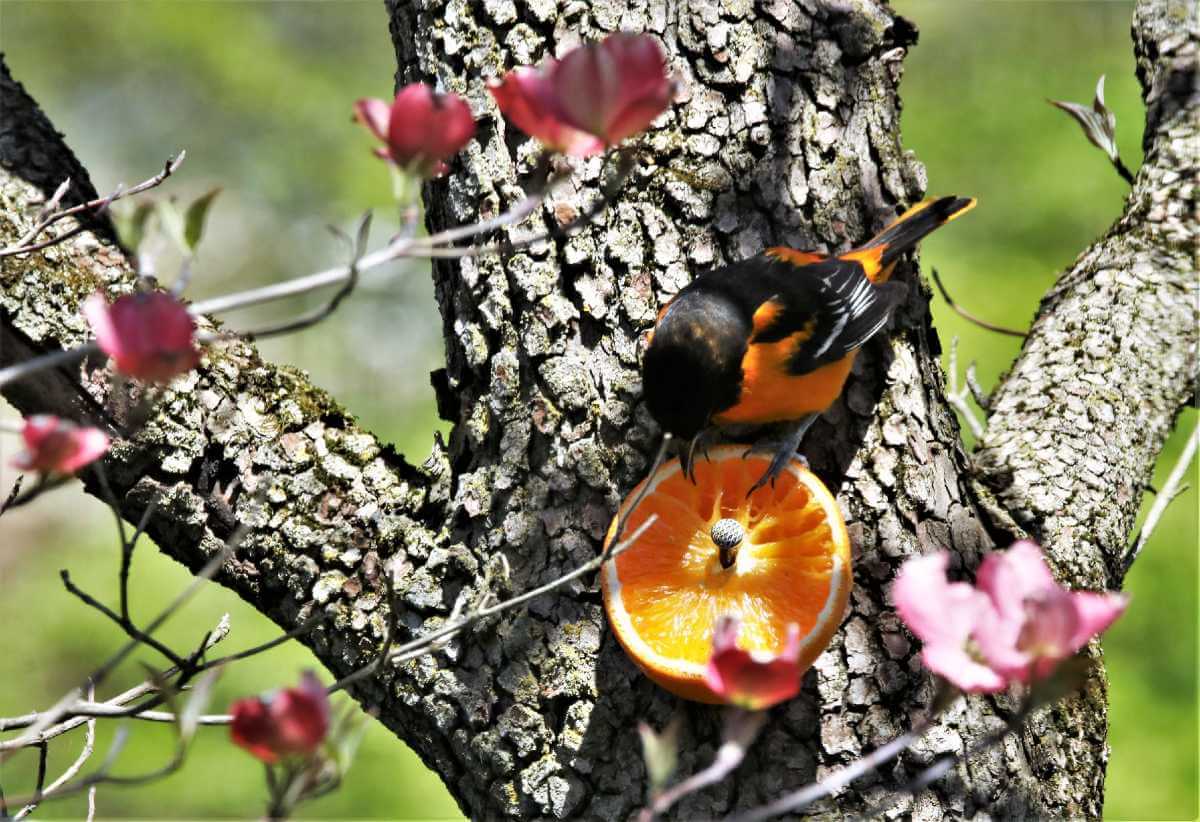
Another way to offer oranges for the orioles is to nail orange halves to a tree or fence post. Simply hammer in the nail, leaving an inch or so protruding from the wood, then force the nail through the skin of the orange. If there are handy broken twig or branch stubs then you may use them instead; simply force the orange onto a suitable stub.
Even children can suspend thick orange slices from overhanging tree branches using household string, twine or hooks.
Whichever way you choose to offer oranges, the orioles will love their sweet citrus treat!
Commercial Oriole Nectar Feeders
AllFreeCrafts is reader supported! Many supplies are found at thrift stores so try that first! However, if you buy from an affiliate link on this site, I earn a commission at no extra cost to you. As an Amazon associate, I earn from qualifying purchases. This has kept AllFreeCrafts.com online since 2002. Thank you!
Commercial oriole feeders are like hummingbird feeders, but colored orange, rather than red, with larger feeding holes to accommodate the larger birds.
I like those similar to the large oriole nectar feeder shown here, with a generous 32 ounce capacity, a wide mouth for easy cleaning, 10 feeding ports, and a sturdy round perch to encourage active feeding.
Nectar feeders are also readily available at pet food, discount or big box stores so you should be able to find one nearby.
Offer Nesting Materials for the Orioles
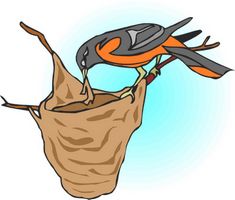
Orioles spend winter in the sunny tropics, migrating up into the northern United States and into southern Canada to nest and raise their chicks. They usually nest in deciduous trees such as elm, maple or cottonwood, well out of reach of most predators, weaving a surprisingly strong hanging pouch from a variety of grasses and other materials.
See Migration and Annual Cycle, from JourneyNorth, for a timeline of when to expect the orioles in your area and check out Audubon’s fascinating article on How Orioles Build Those Incredible Hanging Nests.
Encourage orioles to nest near you by offering a ready supply of tempting nesting materials. Good choices for oriole nests include cat, dog or horse hair, natural fiber dryer lint, or short pieces (3-4 inches) of natural fiber twine and yarn.
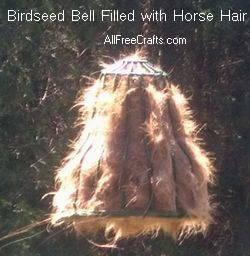
Even milkweed silk, gathered and saved in the fall, makes a welcome addition to an oriole nest.
These enticing nest supplies can be tucked into tree branches or spread over bushes and rough-barked tree trunks.
As well, horse hair or other animal fur can be stuffed into wire bird seed cages. The wires provide a handy perch for ready pick-up by your backyard prospective oriole .
As a bonus, you’ll may also find other birds such as chickadees, finches or hummingbirds, stopping by for nesting materials.
Listen to Oriole Sounds and Songs
Apart from their beautiful colors, orioles are a delight to hear in song. They are expert singers using a variety of pleasing calls, chirps and sweet songs.
More Resources:
Check out Audubon.org for more oriole sounds and calls, plus a concise summary of the nesting habits, diet, breeding habits and conservation habits of the Baltimore Oriole.
Chime In:
Please share your experience with backyard orioles by leaving a comment below!
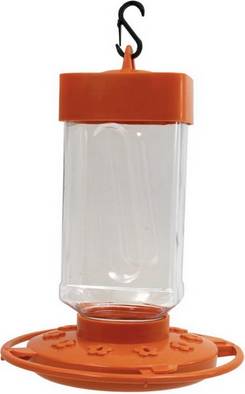
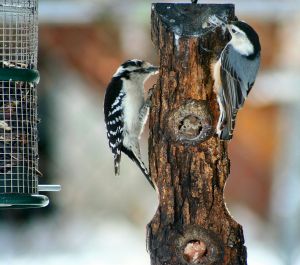
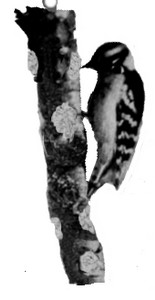
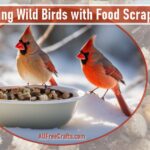
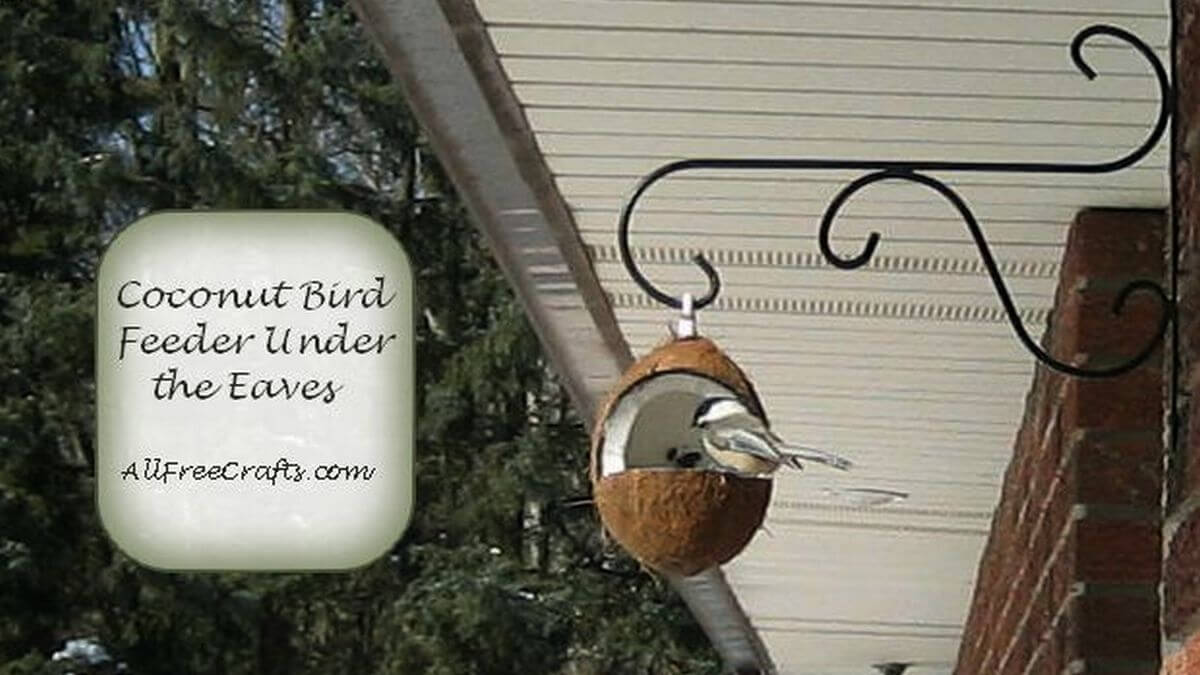
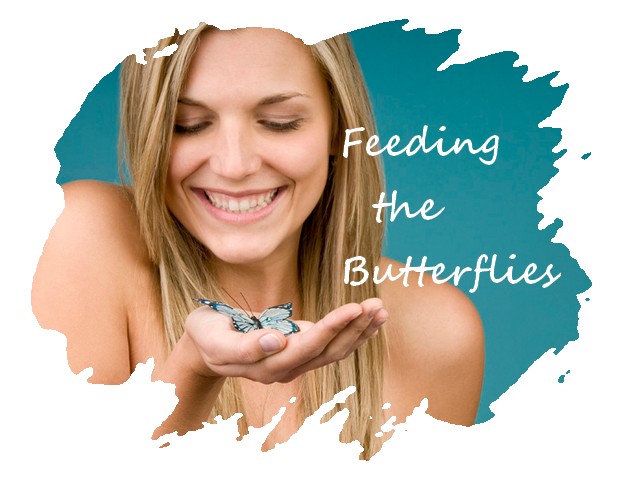
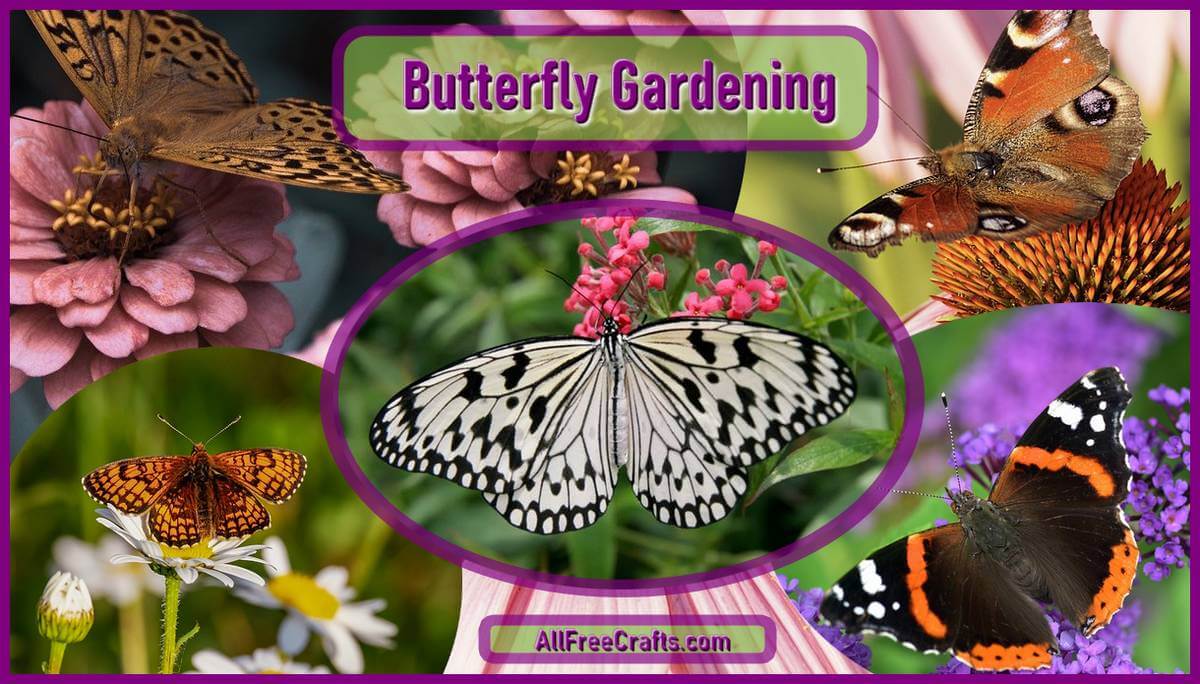
A few weeks back, I recalled a DIY Oriole Feeder project from many weeks ago. I used a Deli cup and baling wire to make an Oriole feeder. And put in the food that they love. That attracts colorful oriole birds to my garden.
I drilled some small holes at the bottom of the deli cup. Then, I made a circle with wire that is just the right size to carry the deli cup. It is recommended to use pliers to secure and tighten. The next step is to bend the baling wire end to hang the deli cup onto the Poole feeder. Finally, I put their favorite food in that homemade feeder, which is jelly. As expected, the orioles proved to be very fond of them.
We had orioles on Cape Cod in May and June in 2020. I had never seen them here before! I ran out and bought an oriole feeder, oranges and the biggest jar of grape jelly I could find. I placed the feeder right out in front of my kitchen window so I could enjoy them up close. My hummingbirds also enjoyed the nectar in the feeder. I would fill the grape jelly container 2x a day. And then one day they were gone!!! Next year I will be ready for them! I hope they come back!
Now they have found your feeding spot, I’m sure the orioles will be back again next year! See above for tips on how to encourage the migrating birds to nest nearby. I’ve also added a link to JourneyNorth which has a timeline of the annual migration of the orioles from their winter feeding grounds in Mexico or the tropics to their journey north up into southern Canada.
I hope that you get to enjoy these lovely birds as long as you can!
Thanks Carla I never thought about that
Can I use coconut sugar for the mixture?
This question came up about the recipe for Hummingbird Food. The answer then was that coconut sugar contains iron, which would be bad for the little birds. I’m not sure about orioles, but I wouldn’t chance it.
Thank you for the info.
I would also suggest using organic sugar and filtered or spring water. Orioles don’t need to be subject to GMO’s or chlorine or fluoride.